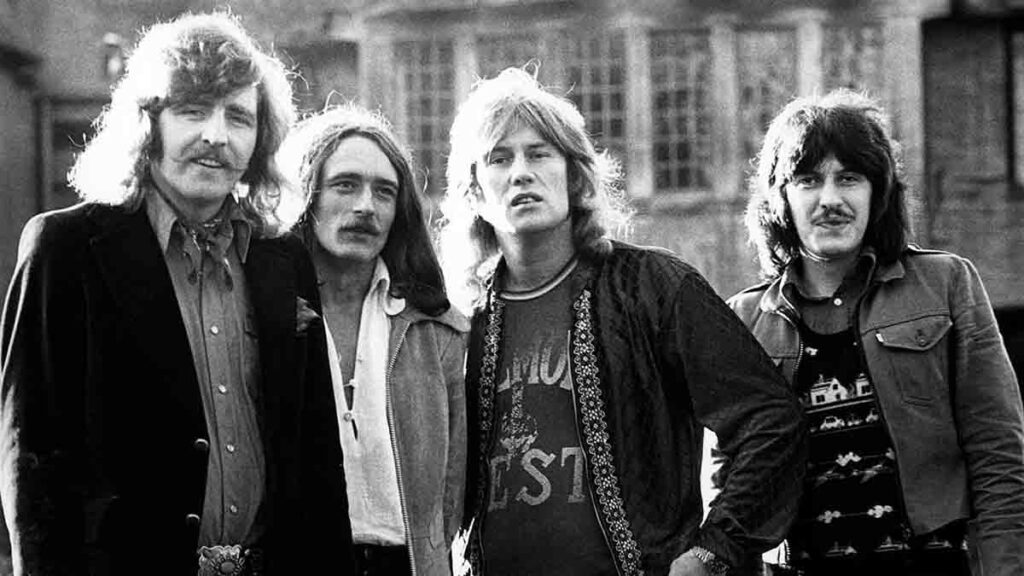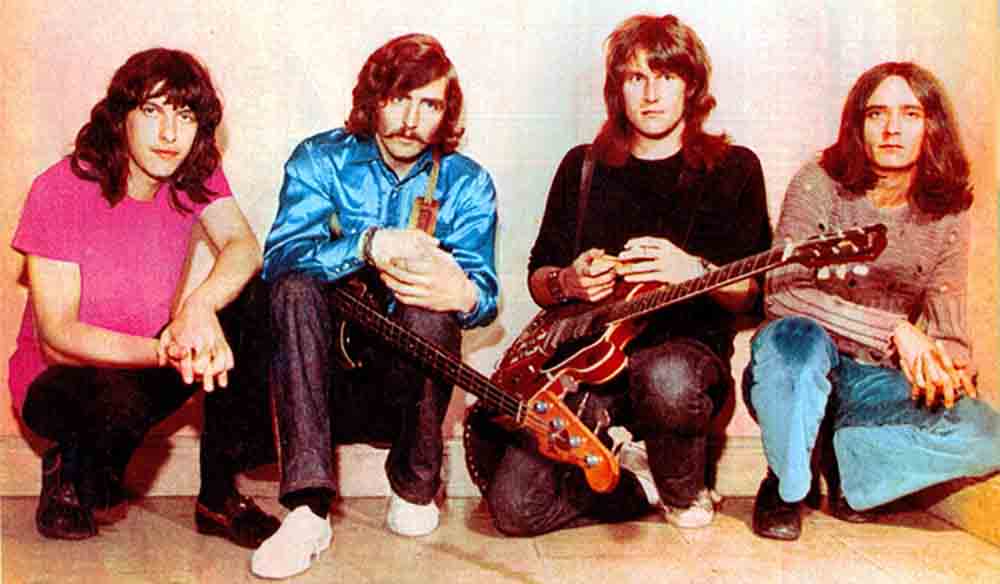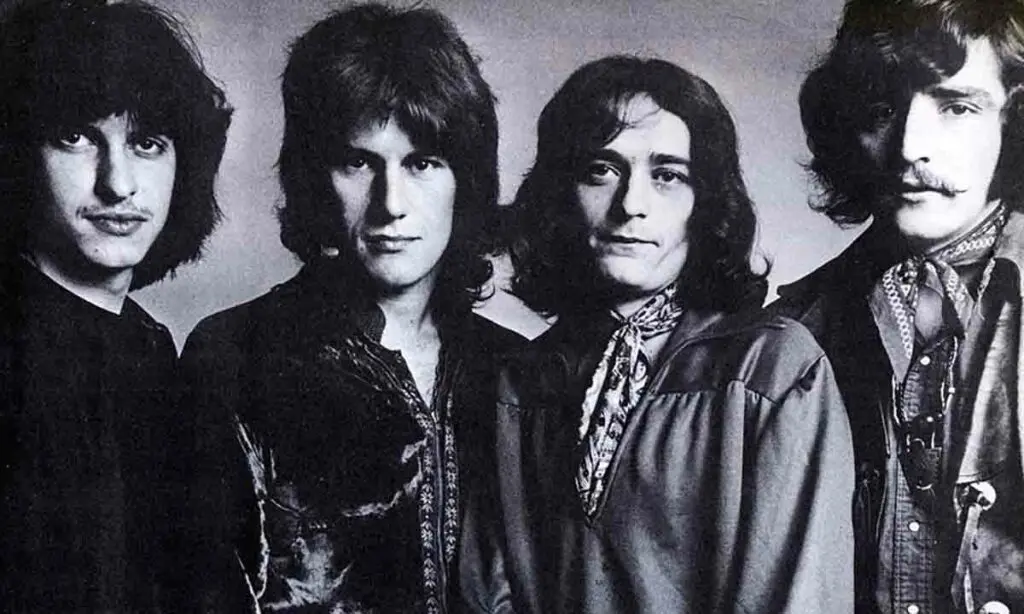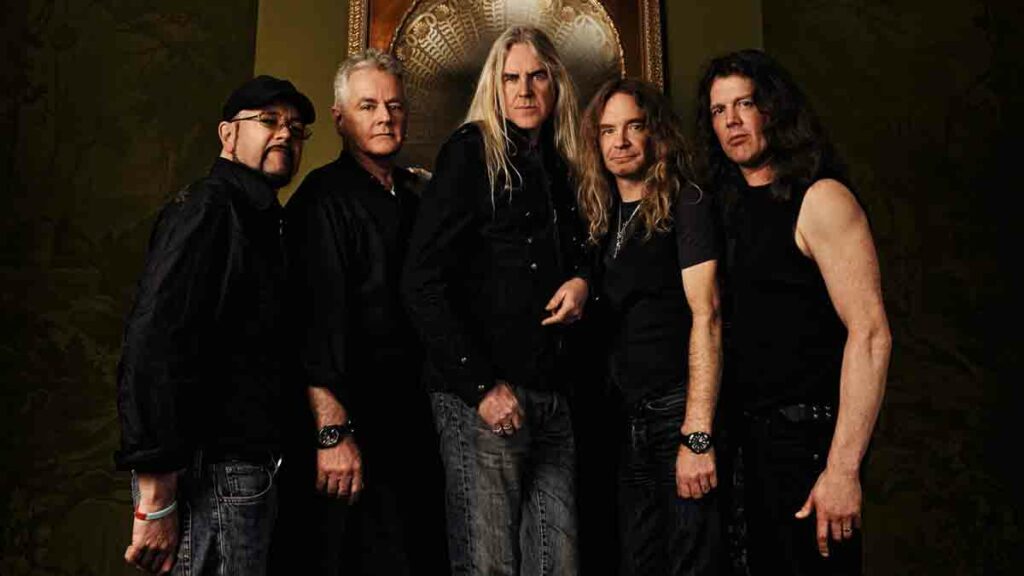The Ten Years After group is a strong line-up, a multidirectional style of performance, the ability to keep up with the times and maintain popularity. This is the basis for the success of musicians. Having appeared in 1966, the group exists to this day.

Over the years of existence, they changed the composition, made changes to the genre affiliation. The group suspended its activities and revived. The team has not lost its relevance, delighting fans with its creativity today.
The history of the appearance of the group Ten Years After
Under the name Ten Years After, the team became known only in 1966, but the group had a backstory. In the late 1950s, the creative duo was created by guitarist Alvin Lee and bass guitarist Leo Lyons. Soon they were joined by vocalist Ivan Jay, who worked with the guys for only a few years. In 1965, drummer Rick Lee joined the band. A year later, keyboardist Chick Churchill joined the group.
The team was originally located in Nottingham, soon moved to Hamburg and then to London. In 1966 the band was led by Chris Wright. The manager recommended a new name. The team got the name Blues Trip, but the guys didn't like it. The group soon changed its name to Blues Yard and then took on its final name, Ten Years After.
The first successes of the group
Thanks to the correct leadership of the team, the guys received an invitation to perform at the Windsor Jazz & Blues Festival. As a result of working at this event, the group signed a contract with Deram Records. The team immediately released the first album with a name that was called the same as the team.

The album includes blues compositions combined with jazz and rock. The title track, which became the personification of the creativity of the early period, was Help Me. This is a reworking of the famous Willie Dixon song. British listeners did not appreciate the band's efforts. The album was not successful.
Unexpected popularity in America
Despite the lack of interest from listeners in the UK, the record was noticed by Bill Graham. He is known as a well-known cultural and media figure in the United States. The compositions of the group appeared on the air of radio stations in San Francisco, and then in other cities of America.
In 1968, the team was invited to tour the United States. The fans of the group were captivated by the skill of Alvin Lee, who was the leader of the lineup. His game was called stylish, virtuoso and sensual. Over the entire history of its existence, the team has visited this country with concerts 28 times. This record has not been set by another British group.
Recognition of Ten Years After in Europe
After a tour of America, the team was invited to Scandinavia. Having finished an active series of tours, the musicians decided to release a live album. The Undead compilation was successful in Europe. The single I'm Going Home was called the best composition of the group for a long time, it became an association with the band.
The release of the second studio album Stoned Henge soon followed. For the group, the collection became a landmark. The musicians were noticed in England. In 1969, the band was invited to participate in the Newport Jazz Festival, and then in the Woodstock festival. The musicians attracted the attention of the public, masters of blues and hard rock. They became known as rising stars.
Promotion to the heights of glory
The band's next album has already hit the top 20. The record was called a notable creation of progressive blues with notes of psychedelia. The composition Good Morning Little Schoolgirl became a bright hit. No less popular were the songs: If You Should Love Me and Bad Scene.
The team released both melodic ballads and compositions with rebellious punk motifs. The beginning of the 1970s was marked by the triumph of the group. The composition Love Like a Man took the 4th position in the English rating. Fans praised the band's next album. The fashionable sound of the synthesizer appeared in music. The music has become more meaningful and heavy. The resulting gloom is largely due to the high load. The band had a busy touring schedule.
Sound update
In the 1970s, Alvin Lee refocused on a heavy sound. The compositions became powerful and rich. The riff tracks were distinguished by their electronic sound. After the release of the fifth studio album, the contract with Deram Records ended. The team began collaborating with Columbia Records.

The first album under the new management turned out to be unexpected. The style of A Space in Time was vaguely reminiscent of the blues and rock that were in previous works. The record received recognition in America. A year later, the group released a collection of songs that were not included in previously released albums. Almost simultaneously, the team was working on recording a new record. The album was in many ways similar to the successful Watt compilation, but did not replicate its success.
On the way to decay
The group's records ceased to receive rave reviews. Listeners noticed mediocre sound, lack of previous professionalism. It was said that Alvin Lee began to abuse alcoholic beverages. If at concerts he held on, then in the studio he worked at half his capacity. In 1973, it was possible to record a virtuoso live album. On this bright work of the group ended.
Critics claim that there was a misunderstanding in the group. Alvin Lee realized that he wanted to leave the band and work solo. They said that he no longer showed many of the best developments to his comrades-in-arms, but left them for himself. After the release of the album Positive Vibrations (1974), the band announced its breakup.
The resumption of activities of the group Ten Years After
In 1988, the band members decided to reunite. The guys did not build grandiose plans. Several concerts took place in Europe, as well as the recording of a new album. After that, the group broke up again. Once again, the guys gathered only in the early 2000s.
The band members were inspired by old recordings. They tried to talk the former leader into recycling the materials. Alvin Lee refused. As a result, it was decided to replenish the team with a singing guitarist. Young Joe Gooch fit right in with the group. The team went on a world tour, and also recorded a new album, and soon published a collection of hits.
Group in the present
Bassist Leo Lyons left the band in 2014, followed by Joe Gooch. The team did not break up. The group was joined by: bassist Colin Hodgkinson, famous for his virtuoso performance, guitarist-vocalist Marcus Bonfanti. Ten Years After released a new album in 2017. And in 2019, the musicians recorded a concert collection. The group does not count on past success, but is not going to stop its activities either.



